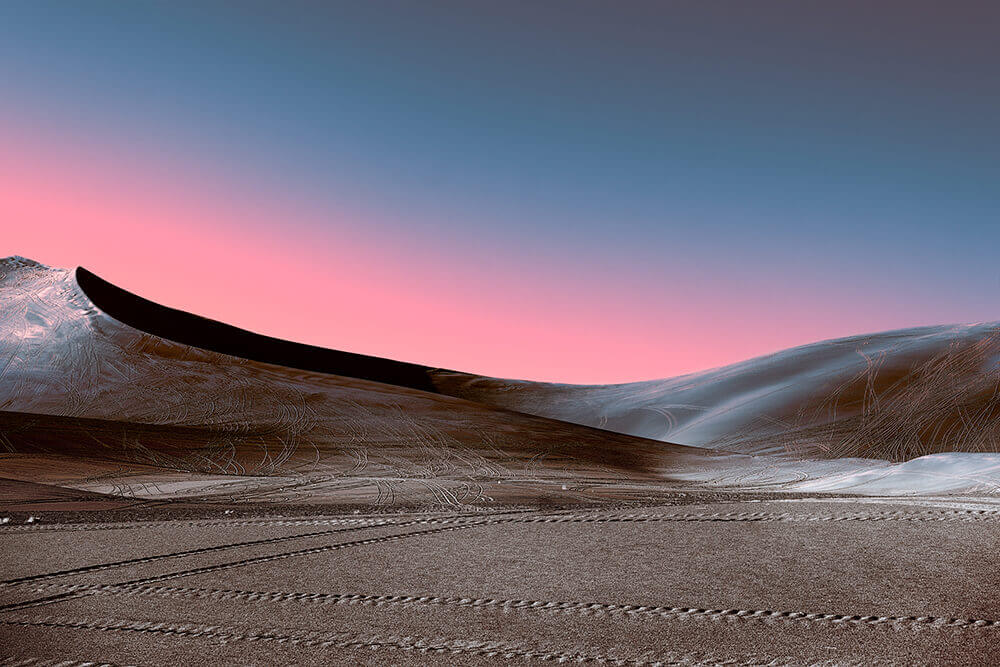INTERVIEW
Re-Interpreting Reality
WITH STEFANO GARDEL
An interview with Stefano Gardel
“I see photography as a great tool to express the part of me that goes beyond intellectualization”
Stefano Gardel won our first theme of Edition IV – CIVILIZATION – with his arresting desert landscape; at once alien and familiar. Judge Simon Norfolk praised it for the craft on show, and noted how it reflects on the blind way in which we vandalize the natural world. We put some questions to Stefano, discussing his recent and rapid journey into the world of photography, his working practise, and his plans for traveling the globe.
Perhaps you can introduce yourself – how you got into photography, and what motivates your practice?
Hi thank you for having me! I was born in Milan Italy in 1980, and moved shortly after to Lugano, Switzerland. When I was 19 I moved to San Francisco, California to study chiropractic, where I lived and worked for eight years as a chiropractor.
I got into photography only recently, beginning of 2016. I was having problems with my health and had to limit to a great extent what I could eat or drink. It resulted in me cooking every meal at home and stopping drinking alcohol altogether, which was very hard! My social life got empty really fast and being outgoing and sociable I found myself getting depressed. So one day after work, sitting on the couch and staring at the white wall I thought to myself: “Wouldn’t it be nice to hang some cool picture there..?” Having had a weekend course on how to use a DSLR 12 years before, I bought a professional camera and started traveling and taking pictures. It was a way to distract myself from my problems, and the more I shot the more it felt like my own thing, a way to express my creativity. Things happened really fast and now, one year later, I’m selling my work to art galleries in Milan and Sydney.
I find that my motivation is determined by inspiration. When I feel inspired by an idea or a project I have to go out and shoot in a matter of days – it’s like an urge I cannot resist. I know exactly what I want to shoot, the mood I want to convey and how to edit it. On the contrary I may have long periods of times were nothing comes, so I just wait.
Your series ‘Neon Desert’ confounds expectations – the desert environments seem both familiar and alien at once; recognisable forms but rendered in metallic, industrial tones. Can you tell us a little about how the series originated, and what your intention behind it was?
This series was a revelation to me. I didn’t know where I was going with it until the end. It was shot in the California desert earlier this year. I got there around 6 a.m. and started shooting for a couple of hours. When I got there I was disappointed to find quad tracks all over, because I was going for a more minimal, clean look. But after a while I was there I started playing with the tracks in my compositions instead of avoiding them. I thought how cool it actually was to find in this lost land with no soul in site these marks of “aggression” on this otherwise dormant landscape. Mad Max came to mind, and how I could actually be in a futuristic post apocalypse land. So in post-production I decided to give it a futuristic look, first working the whole series in black and white to get the contrasts with great detail, and afterwards recoloring it from scratch with coloring masks. I tried to get a retro synthwave look, aiming for a Blade Runner feel. The title of this series Neon Desert is inspired by the movie “Neon Demon”, by Nicolas Winding Refn, which used very similar color tones.
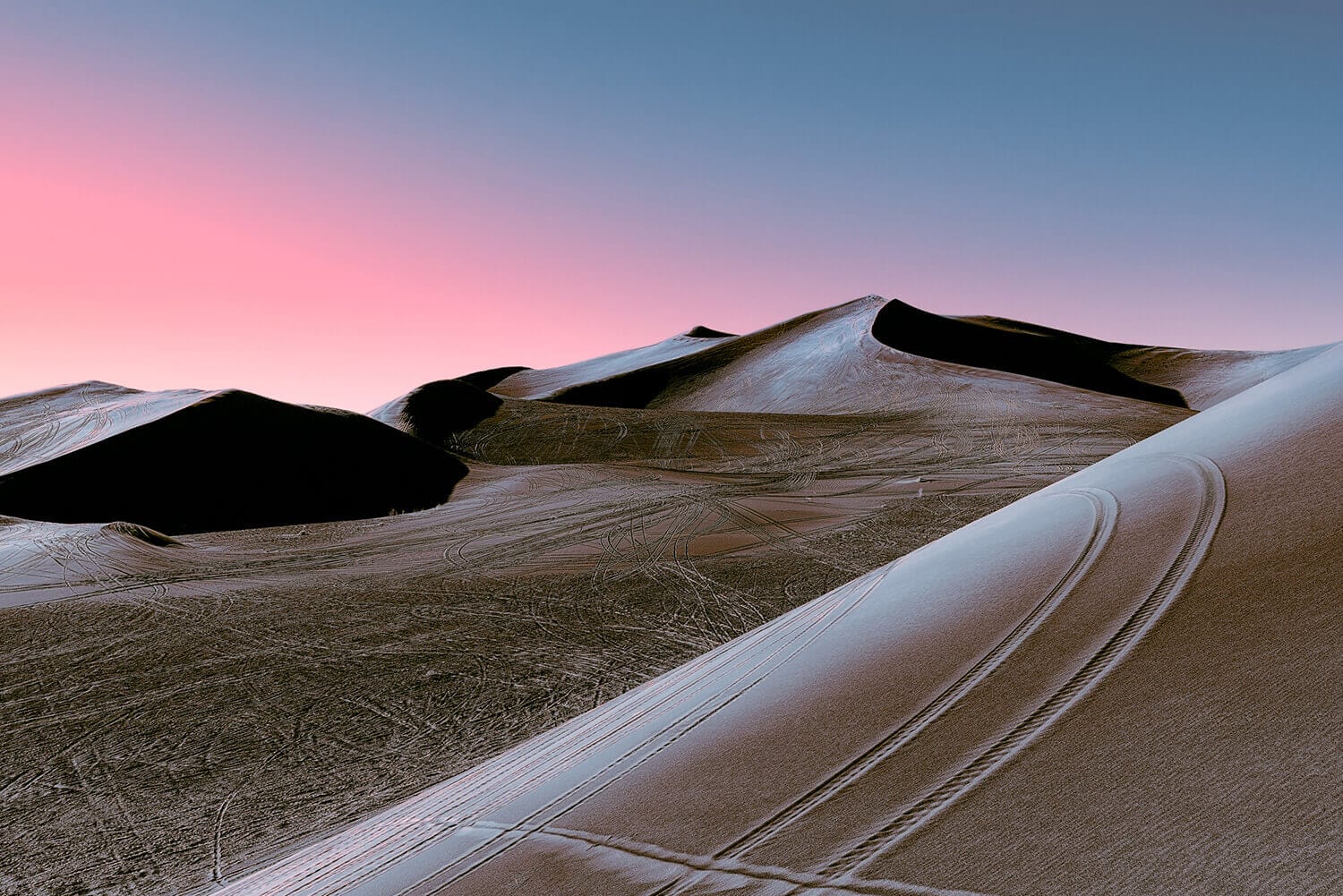
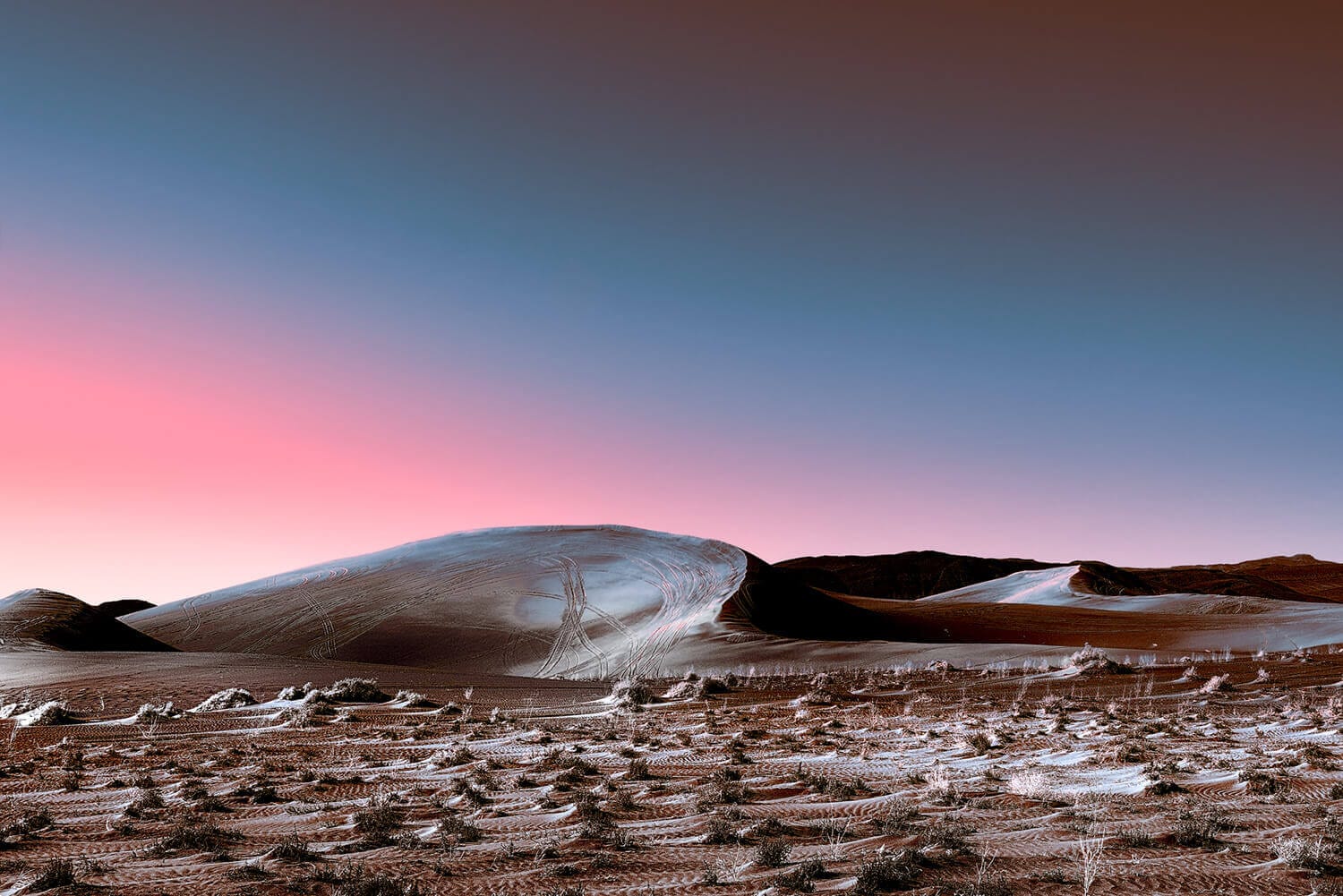
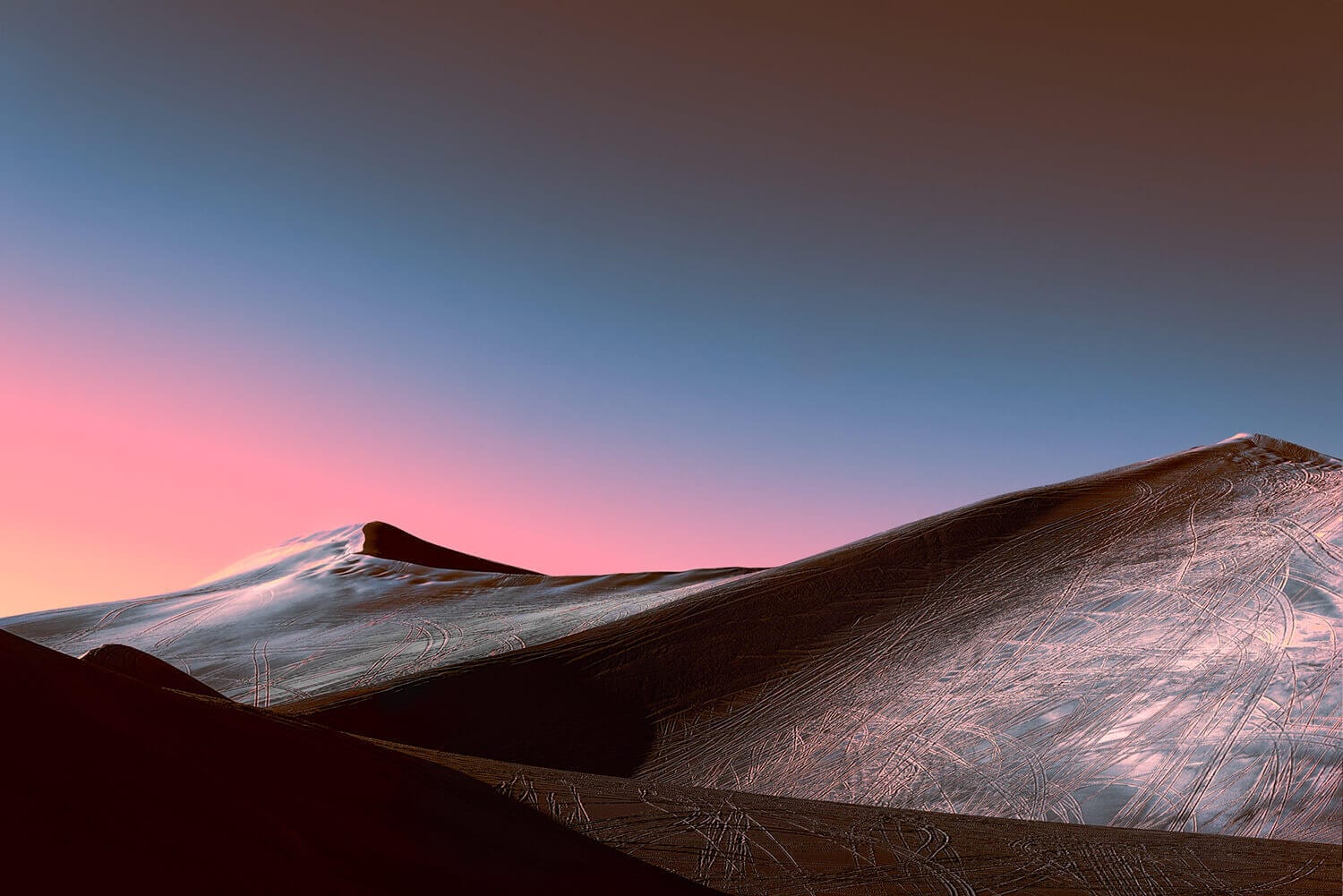
Images from the series ‘Neon Desert’
Our judge Simon Norfolk’s critique of your winning image was reflective, with it conveying to him “a blindness in the way we vandalise the natural world”. Is this an interpretation you had in mind when creating the series?
Yes, and it became even more so as I worked on it. In my mind I envisioned an extreme situation, where in a possible near future the resources of our land are so scarce that all is left is a nomadic civilization struggling for survival, ravishing everything it encounters.
Tell us about the process you employ. I believe your images are as much a product of post-processing in the studio as they are photography in the field. How much experimentation takes place in this post-processing phase, or do you go into it with clear ideas? Is your pseudonym ‘59th attempt’ perhaps a nod to the level of trial and error required?
Usually when I go out to shoot I have an idea of what I want to achieve. I have a mental outline of the mood I want to convey, and a few ideas about the compositions I want to make. But then I leave things pretty much to chance, especially if I’m doing street photography. I usually listen to ambient electronic music while I’m shooting, something that inspires me and lets my mind go… and then I just start witnessing without judgement situations, people, thoughts, emotions, letting myself sink into the present. Whether I’m standing still on a street corner for hours or moving around a city non-stop, the feeling I get is the same. It’s like a meditation.
59th attempt is because I may shoot up to 50-60 shots of the same subject with minimal variation in exposure, focal length and composition, so that when in post-production I’m reviewing my shots I can find the exact one I’m looking for, which may happen around the 59th… I then usually come down to 5-10 shots that really grab my attention and work on them as a series. Once I get to the editing part I have pretty much a clear idea of what I want to make of the series, and start doing some experimenting with Photoshop and other editing plugins. I see my work as art based, as an interpretation of reality rather than an effort to faithfully represent it.
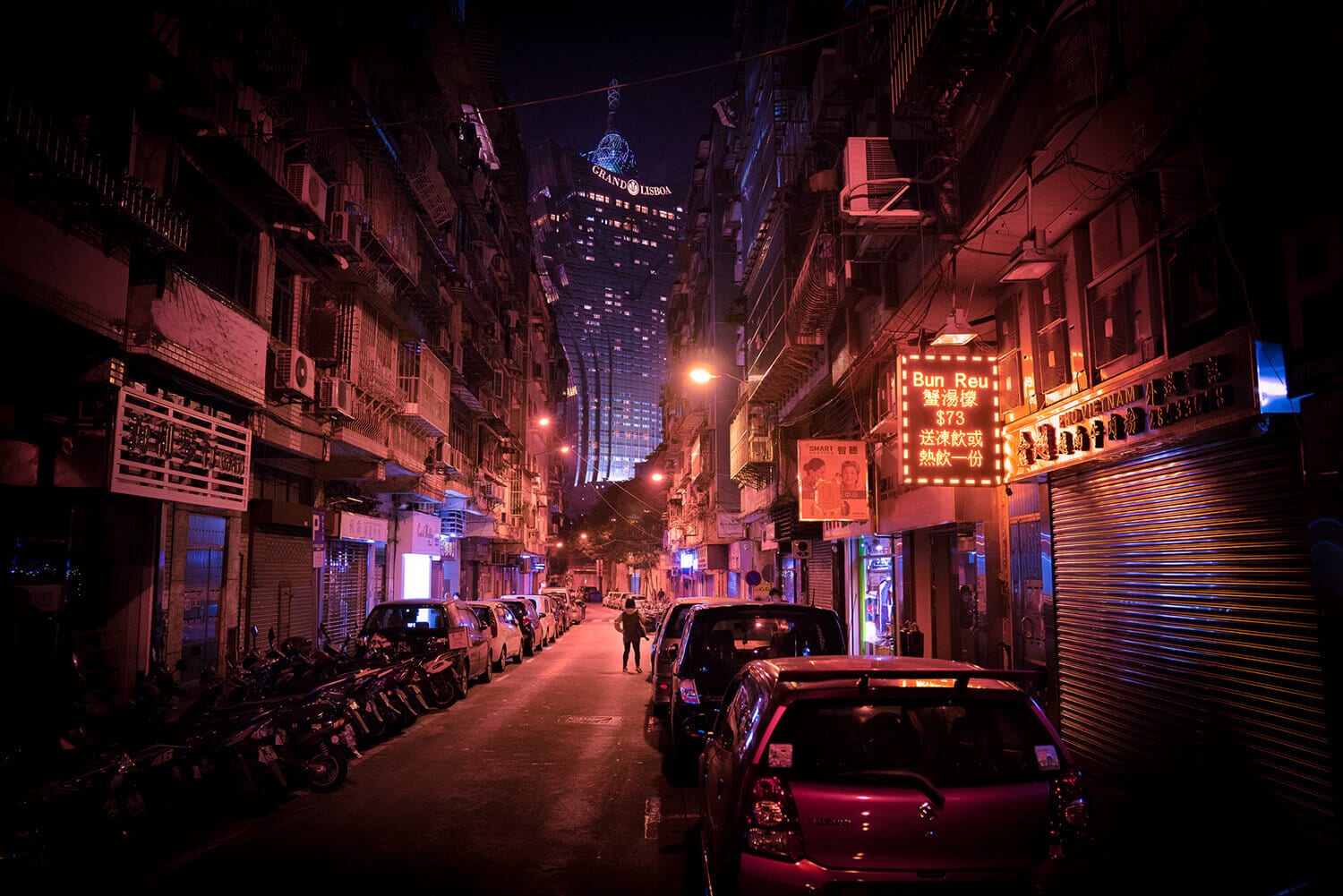
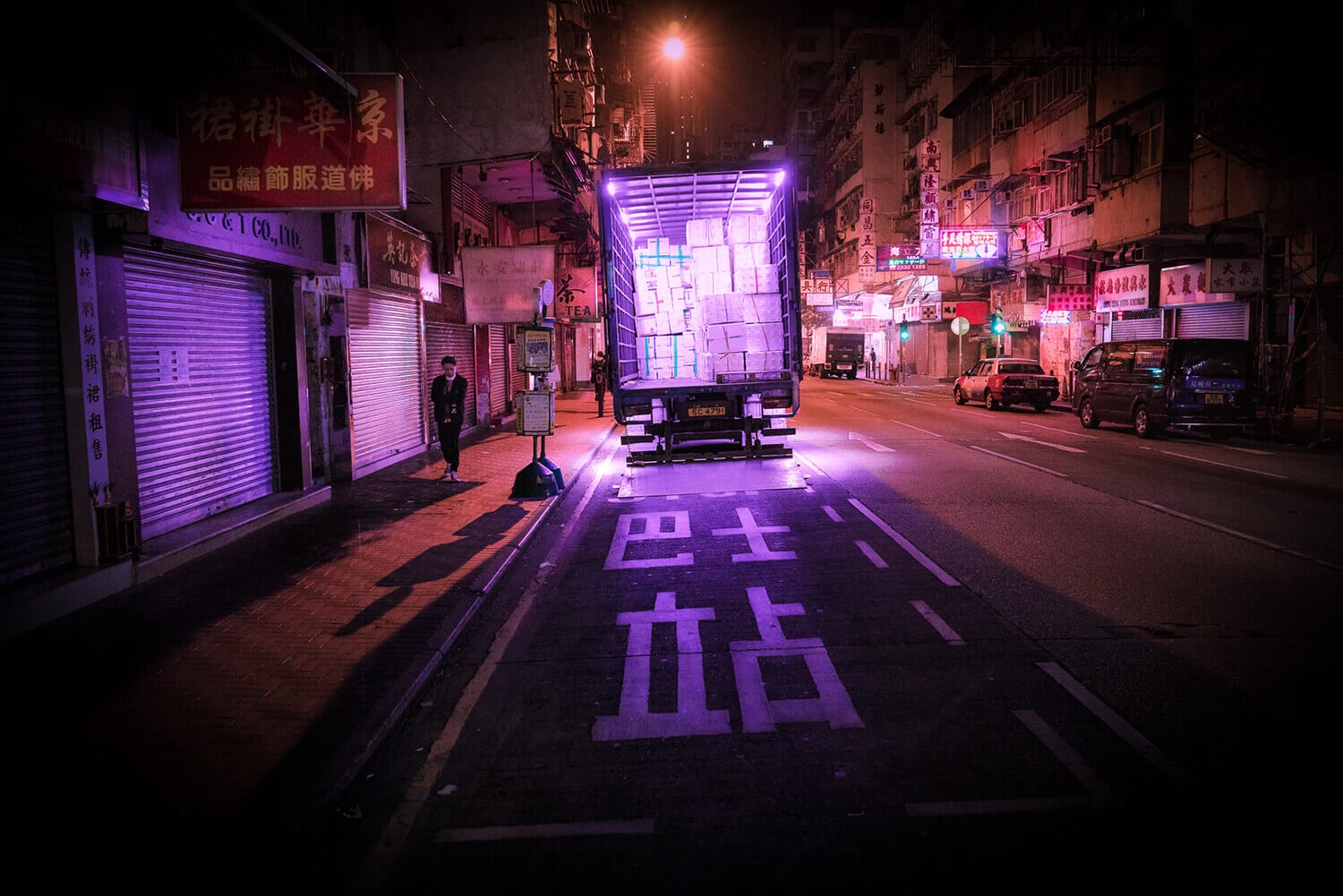
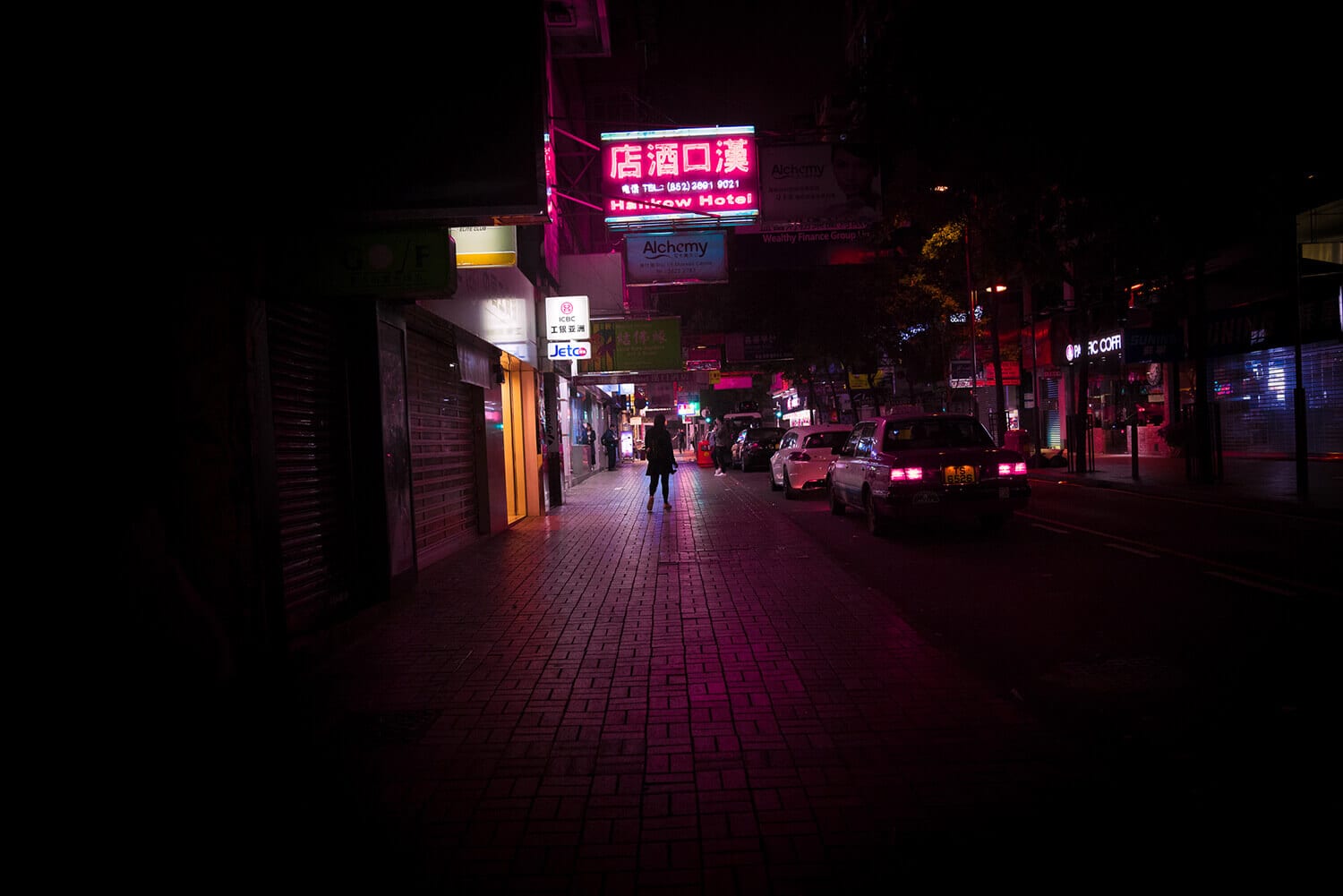
Images from the series ‘Looming Kowloon’
Your series ‘Looming Kowloon’ – a document of the Hong Kong district – almost seems like a companion piece to ‘Neon Desert’. It capture the same luminous light, but while the latter presents empty, serene environments, the former shows some of the most densely packed urban spaces in the world. Is there a conscious link here? Is ‘Neon Desert’ a reaction to ‘Looming Kowloon’?
It probably is, but I didn’t think of it consciously. Whenever I do a project it’s like a compulsion rather than a conscious decision. I’m drawn towards something without any particular apparent reason, but with the strong feeling that there is something that I need to explore. Probably in a subconscious way it’s me trying to seek balance. I see photography as a great tool to express the part of me that goes beyond intellectualization.
You’ve travelled extensively with your photography. Do you have a next project, or location in mind?
I’m planning on going to Iceland and the Nevada Desert this August, so let’s see what happens!
All images © Stefano Gardel
See more at www.59th-attempt.com
